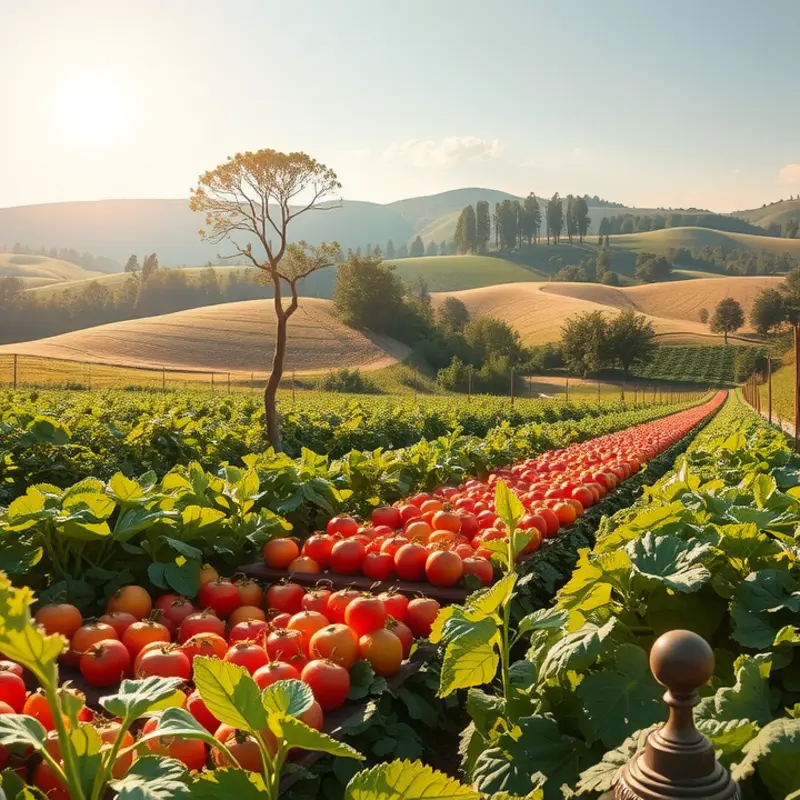Alternative protein binders are gaining popularity among home cooks and health-conscious individuals. These innovative ingredients not only offer nutritional benefits but also provide versatile, flavorful options for a variety of dishes. Whether you’re looking to enhance a vegetarian meal or seeking healthier alternatives for binding your favorite recipes, these natural binders will empower your culinary adventures with creativity and nourishment.
Plant-Based Powerhouses: Beans, Legumes, and Grains

Harnessing the thickening power of beans, legumes, and whole grains can transform your culinary creations. These plant-powered ingredients not only provide structure in recipes but offer outstanding nutritional benefits as well. Let’s take a closer look at how these versatile elements can act as protein binders in everyday cooking.
Beans and Legumes
From creamy hummus made with chickpeas to a hearty black bean burger, beans offer endless possibilities. Their dense, fibrous texture helps to absorb moisture, improving the consistency and binding properties of dishes. Lentils, split peas, and kidney beans, in particular, are packed with protein, fiber, and essential nutrients like iron and folate. This makes them a fantastic option for enhancing both the nutrition and structure of your meals.
To use beans as binders, consider pureeing cooked beans into a smooth paste. This can add moisture and bind ingredients together in recipes like veggie burgers, meatless meatballs, or even muffins. They create a rich base that can absorb flavors while providing a satisfying texture. Also, consider using bean flour, available in many stores, to thicken sauces and soups.
Grains
Whole grains are another example of protein-rich binders, offering both texture and nutrition. Quinoa, for instance, is not only high in protein but also contains all nine essential amino acids, making it a complete protein source. By cooking and slightly mashing quinoa, you can create a cohesive mix for patties or stuffing.
Oats and brown rice, with their natural starches, can also help hold ingredients together. Use rolled oats as breadcrumbs or grind them into flour for a smoother texture. These grains provide an excellent base for savoury dishes like loafs and croquettes. Meanwhile, cooked brown rice can be combined with beans or lentils to help form shape-retaining patties.
Nutritional Benefits
Incorporating beans, legumes, and whole grains doesn’t just improve texture—it significantly boosts nutritional profiles. High in dietary fiber and low in fat, these plant-based ingredients support digestive health and may contribute to heart health by lowering cholesterol levels. For those seeking to increase plant protein intake without relying on meat, these are perfect candidates.
Practical Tips
When substituting traditional binders with plant-based alternatives, it’s important to consider their moisture content. Often, using extra binding agents like flaxseed or chia seeds—soaked until gelatinous—can further enhance their sticking power. And if you’re looking to save time in the kitchen, consider reading about minimal prep dinner ideas for more tips on simplifying your cooking routine.
In conclusion, beans, legumes, and whole grains aren’t just complementing stars on a plate; they’re essential ingredients for anyone seeking nutritious and functional alternatives to traditional binders. Explore the wealth of recipes that take advantage of these powerful plant-based ingredients to enhance your culinary repertoire.
Earthy Nuts and Seeds: Binding with Healthy Fats

Nuts and seeds bring more than just flavor to the table. Their natural oils and proteins make them excellent binders in cooking. Almonds, chia seeds, hemp hearts, and flaxseeds not only contribute texture but also nutritional value to both sweet and savory dishes.
Nuts like almonds provide a delicate binding strength when ground into meals or butters. The rich, slightly sweet taste of almond flour adds a lovely depth to baked goods, binding as it bakes. For a stronger binding agent, consider almond butter. Its creaminess works well in no-bake desserts and gives a supple texture to gluten-free cakes.
Seeds such as chia and flax have a unique ability to soak up liquids and form a gel. This characteristic turns them into powerful yet simple binders. Chia seeds can absorb multiple times their weight in liquid. Mix a tablespoon of chia seeds with three tablespoons of water, and after 15 minutes, the concoction becomes a gel-like substance ideal for egg substitution in vegan recipes.
Flaxseeds offer a similar functionality. Like chia, ground flaxseeds can be mixed with water to replace eggs in everything from muffins to pancakes. This not only helps in binding ingredients but also infuses dishes with a nutty flavor and a boost of omega-3 fatty acids.
Hemp hearts, though less commonly used as binders, bring a subtle earthiness and an impressive protein profile. Blend them into smoothies or sprinkle them over salads to add crunch and binding power. Integrating these seeds into crusts for savory pies or tarts can elevate both taste and nutritional value.
Incorporating nuts and seeds into your cooking enhances more than just flavor and texture. These elements can replace conventional binders like eggs while offering beneficial fats and fiber. Consider using them in burgers, where ground nuts add density, or in baking, where seeds create chewy textures.
For those interested in expanding their culinary repertoire with these versatile ingredients, learning about their properties is just the beginning. Enhancing your dishes not only tantalizes the taste buds but also supports nutritional adequacy. To further dive into the world of cooking without using conventional binders like gums, visit our guide on cooking without gums.
Whether you’re adapting recipes for dietary preferences or simply seeking new flavors, nuts and seeds provide a functional and flavorful solution. Their inclusion in your culinary practices not only modernizes cooking techniques but also aligns with a more health-conscious approach. Embrace the natural properties of these earthy gems as you bind your ingredients with nature’s wholesome promise.
Final words
Integrating alternative protein binders into your cooking can open up a world of flavors while enhancing the nutritional profile of your meals. From the earthy textures of beans to the healthy fats of nuts, these ingredients not only bind but also enrich your dishes. Embrace these options as versatile solutions for vegetarian recipes or simply as enjoyable ways to enjoy wholesome food. As you experiment with these ingredients, you will discover the joy of healthy cooking while supporting a balanced diet for yourself and your family. Let this guide inspire your next culinary creation!







